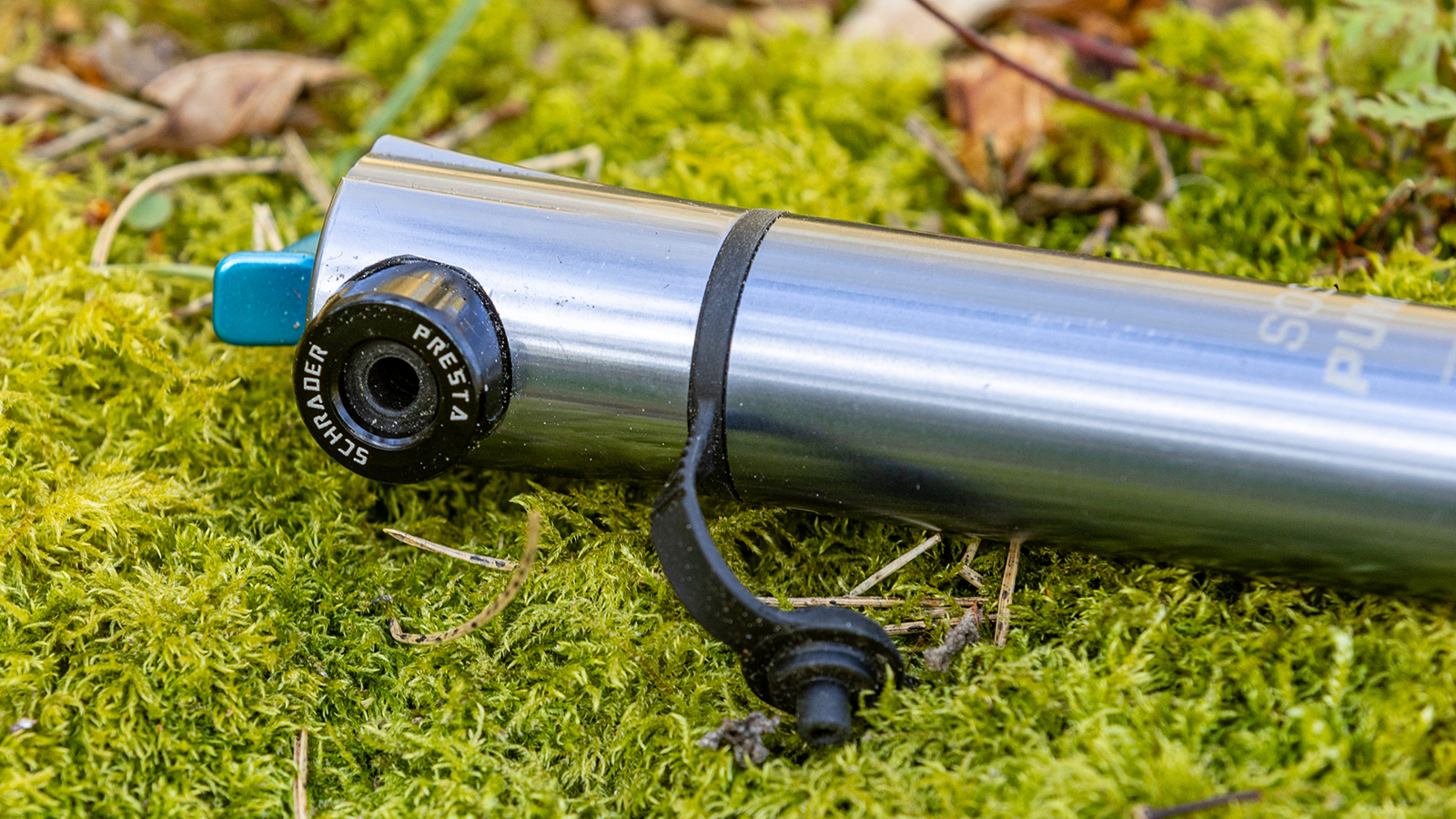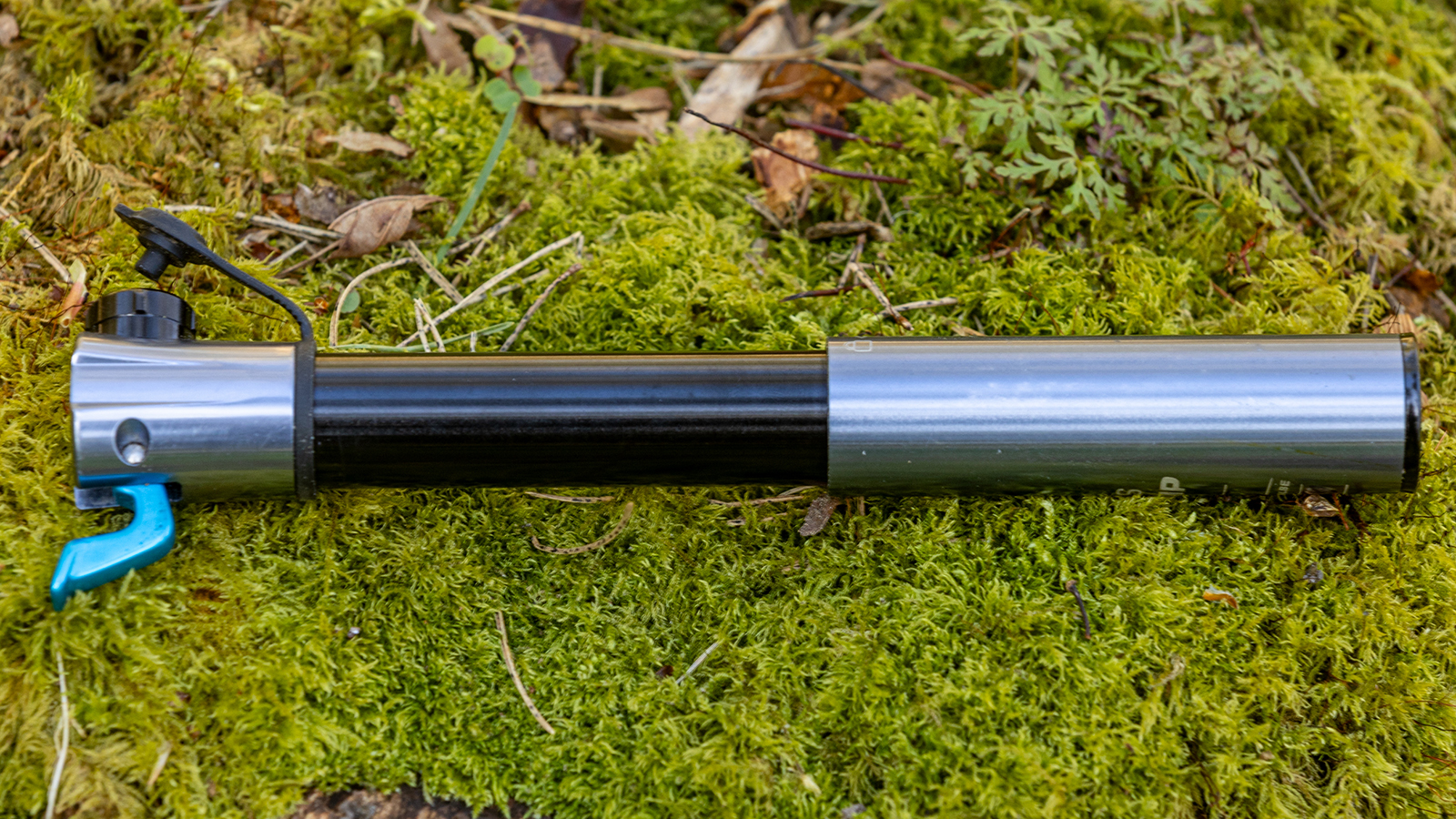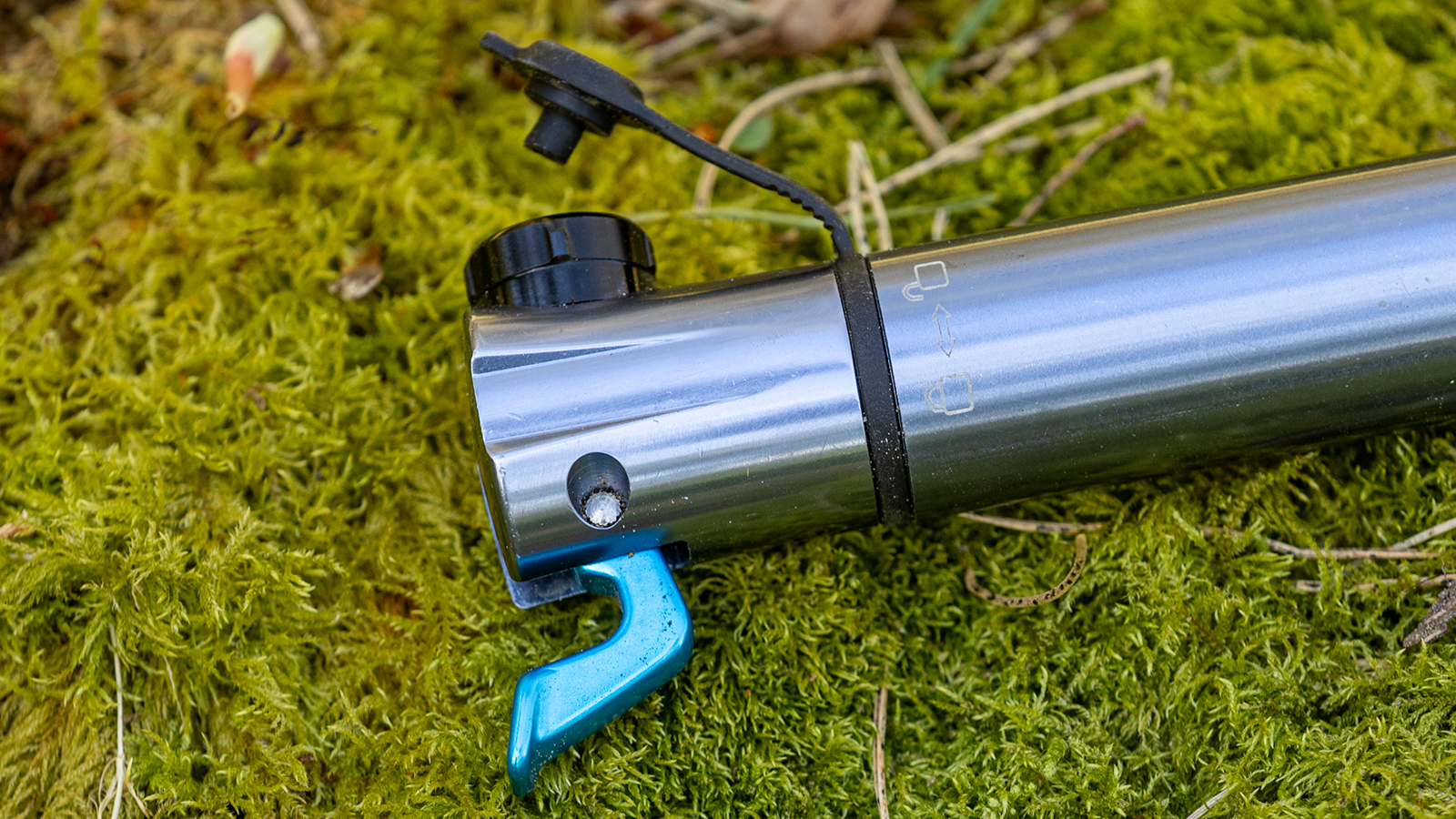Bike Perfect Verdict
As a truly mini Mini Pump, Schwalbe’s SOS is a beautifully made aluminum inflator with an anodized lock-on head that stays rock-solid on valves.
Pros
- +
Tiny size (13cm)
- +
Lightweight (sub 100g)
- +
Superb construction quality
- +
Tough and durable
- +
Lock-on head
Cons
- -
Slower inflation (to be expected)
- -
Price
- -
Can’t (re) mount tubeless tires (obviously)
Why trust BikePerfect
Bike pumps are much like cameras, where the saying goes that the best one is always the one you’ve got with you.
No one actually enjoys pumping up tires (do they?), so you’ve got to get the job done as easily as possible. Obviously, a massive floor pump is going to inhale and exhale more air quicker, but you can’t pump anything at all if you don’t have a pump with you in the first place.
Enter the portable mini-pump, or in Schwalbe’s case, the mini 'Mini Pump'. This diminutive aluminum-bodied pump is just 13cm long and weighs under 100g. I’ve been carrying (and occasionally using) it on road, gravel and MTB rides for a few months and have been impressed by the overall quality and robustness.

Design and specifications
Schwalbe uses an all-metal outer shell that’s about the same size as a marker pen. This makes the SOS put a good case forward for being preferred over a CO2 canister (or two) and an inflator head as it weighs and takes up about the same amount of space. The overall SOS length is so small it fits in a jersey (or even a trouser) pocket without sticking out of the top and I’ve also been bunging it inside internal frame storage on my MTB where it leaves room for plenty of other bits.
The whole pump body twists to lock shut with a solid click and the valve head also locks in place on valve stems with a very solid-feeling blue anodized flip lever.
This valve head can convert between Presta and Schrader if needed, but you do need to unscrew it and flip it to swap over (most riders will obviously leave it in Presta mode unless they are playing out on their BMX bikes). The rubber-sealed valve hole also has an effective rubber plug that pushes in to keep crud out.
Schwalbe’s design sees the whole inner tube telescope back and forth to suck air in and the build quality and tolerances are really tight and waggle free with a smooth action and no tight spots.

Performance
Most mini pumps work (eventually), some never work, but even the best ones I’ve tried also generate a ton of heat and start flexing between body and inner shaft once you start climbing up the pressures.
Schwalbe’s pump trumps most in this regard as the smooth action doesn't waver as you build up the air pressure, and while it’s not exactly that fast to inflate, it never morphs into a sweat fest of impossible pushing and pulling like some mini-pumps once you get more than 20psi in an MTB tire.
The SOS is only rated up to 85psi, but even on my 30mm-tired road bike, that’s way above what most riders will need these days. The downside of any mini-pump is you can’t inflate or reseat damaged tubeless tires as pressure delivery is too slow to seat onto the bead if you’ve punctured and plugged a tire and pulled sidewalls out of rim walls.
Where mini-pumps do excel though is getting you out of trouble if you’re in the middle of nowhere, have exhausted CO2 cartridges and need to use a tube – or simply reinflate a tire if you got lucky and caught a puncture early.
It's a bit of a fiddle fitting your hands in between spokes on 32-spoked MTB wheels and stabilizing the head on the valve to prevent damage, but because there is no flex between the internal shaft and external body here (like on many mini-pumps) that can damage and bend Presta valves, the actual pump action is very stable and consistent. The excellent build quality also extends to the finish and this pump still looks like new despite being lugged around and the action has stayed tight and smooth over time.
I’ve used one of the SOS’s closest rivals on a ride before, the Lezyne Pocket Drive Mini Pump, which a mate has and my verdict is this Schwalbe model is night and day better (aka faster) at inflating. While both are about the same size, Lezyne’s 15g lighter pump uses plenty of internal space to store a pull-out flexible hose, which presumably eats into internal pump chamber volume and really reduces inflation time and efficiency.

Verdict
As I said in the intro, the best pump is the one you’ve got with you and there are few excuses for not lugging round this tiny, 95g, Schwalbe SOS pump. It can serve as a great pocket-sized get-out-of-jail-free card, especially considering that, while it might be a leisurely inflation tool, it trumps rivals in terms of solidity, build quality, resistance to valve damage and overheating.
Tech specs: Schwalbe SOS Mini Pump
- Price: $39.99 / £35.99 / €40.00
- Components: One aluminum mini pump
- Weight: 95g
- Max air pressure : 85psi
- Colors: Silver/Blue
- Rival products: Merida Telescope mini pump, Lezyne Pocket Drive HP

An ex-elite downhill racer, Mick's been mucking about and occasionally racing mountain bikes for over twenty years. Racing led to photo modelling and testing kit for magazines back in the day, and, nowadays, he's mostly riding enduro-style terrain on conventional and electric bikes. As curious as ever about products and tech, he's as likely to be on the other side of the lens or computer screen rating, reviewing and shooting all the latest gear. Mick's list of regular clients includes Bike Perfect, MBR, MBUK, and most of the leading UK MTB publications at one point or another.

